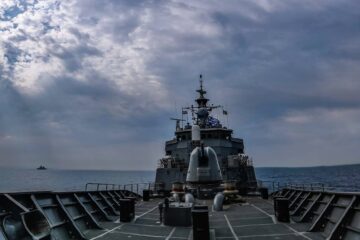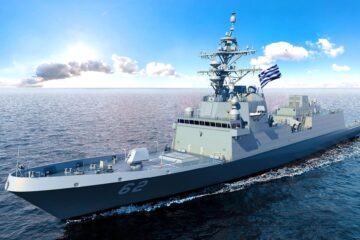In France, such systems were mostly deployed in the Sahel (Africa) region for protecting French Army military bases. According to end-users, the experiment was extremely relevant, the system having reduced the number of attacks by seven when deployed. With increasing immigration issue and incidents in national maritime EEZ, various armed forces are now considering these light and mobile solutions to complement the existing fixed surveillance assets.
CNIM entered this segment in march 2019 when it acquired french SME Airstar Aerostar specialized in blimps. The company was renamed CNIM Airspace a few months later.
« This company is one of the main partners of Thales for the Stratobus airship project and provide the French space agency CNES with stratospheric blimps for measures and tests tasks »
Xavier Montazel, director of the Defence & Maritime division at CNIM.
CNIM Airspace also sold number of smaller systems for the control of power lines.
CNIM Airspace relies on three types of tethered aerostats depending on the payload capacity, autonomy and altitude, from tactical with the White Hawk, to the operative and strategic levels with the the Eagle Owl and Condor systems. Following successful experiments, CNIM is now promoting small and medium tethered aerostats for border and coastal surveillance missions.
« The need for such tethered aerostats is now rising with a growing number of call for tenders, » Montazel adds. The European Border and Coast Guard Agency (Frontex), among others, launched a tender for two systems which will be tested in the Greek islands. Frontex’s experiment is directly linked to an ever-growing requirement for more efficient and accurate detection capabilities in a contested environment such as the Oriental part of the Mediterranean Sea. « These trials aim at validating the relevance of tethered aerostats in such context of use ». But the trials Frontex will carry out could open the way to a larger market, as the agency is qualified to propose every solution it deploy to each European country.

Back in France, tethered aerostats are not being considered for deployment along the coastal mainland. The French Navy planned on running tests at some point, but was stopped as the French Ministry of Armed Forces considers the Spationav V2 coastal surveillance system sufficient to meet the need. « The solution could nevertheless be considered for the overseas departments and territories ». Two programs are also being pursued by the French Army Technical Section to equip the French Army with an industrial solution aiming at protecting bases and logistical convoys once stopped.
White Hawk weights around 15 kg for a maximum ceiling of 200 to 300 meters and a payload capability of up to 5 kg. The Eagle Owl, which has a weight of 100 kg, has a maximum ceiling of 600 meters and carry up to 90 kg of payload during 7 days. « Our idea is to make this system a complement to existing semaphores, which are limited in term of radar and EO/IR detection capabilities ». Thus, adding a few hundred meters of altitude will significantly increase the sensors range.
« Depending on the payload requested by the user. The White Hawk is designed for a single payload like lightweight EO/IR sensors, but if you need to add communication relays and/or radar or heavier EO/IR sensors then the Eagle Owl should be the correct answer »
Xavier Montazel, director of the Defence & Maritime division at CNIM.






